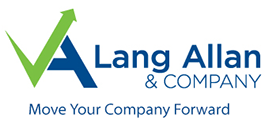
Congress recently passed legislation to loosen some of the restrictions that came with the popular Payroll Protection Program; the president signed it into law on June 5.
The new law runs only about 1,000 words, but contains several major changes that vastly extend the terms of the program:
- The new law lets PPP loans run for 24 weeks — previously the term had been 8 weeks. Notes The Wall Street Journal, this gives “small businesses more time to use the money and still have the loans forgiven while helping them better navigate the uncertainties around reopening.”
- The law extends the deadline to rehire workers to Dec. 31 for those companies that want to qualify for loan forgiveness. Previously, this deadline was June 30.
- The law lowers the bar for PPP funds that must be used for payroll to 60% for those businesses that want forgiveness. Previously, it was 75%. But this is a “cliff,” according to guidance from the American Institute of CPAs: “Borrowers must spend at least 60% on payroll or none of the loan will be forgiven.” The previous “sliding scale” calculation method may return in future legislative tweaks, however.
- Previously, in order to be eligible for forgiveness, borrowers had to show they kept employees or rehired them within a set period of time. While this is still true, there’s some leeway in the new law: “The new bill allows borrowers to adjust because they could not find qualified employees or were unable to restore business operations to Feb. 15, 2020, levels due to COVID-19 related operating restrictions,” according to the AICPA.
- Borrowers can now take up to five years to repay the loan, instead of the previously established two years. The interest rate remains 1%.
- The new law permits PPP loan recipients to also delay payment of their payroll taxes. This was previously prohibited.
More guidance and clarifications are likely to come. Until then, loan recipients may want to check AICPA guidance or the bill itself.
Meanwhile, loan recipients planning to submit forms for loan forgiveness should tread carefully: It may take some time for the Small Business Administration to update its form to align with the new, more flexible terms.
If someone you know would benefit from this information, please share it or contact us for assistance.
